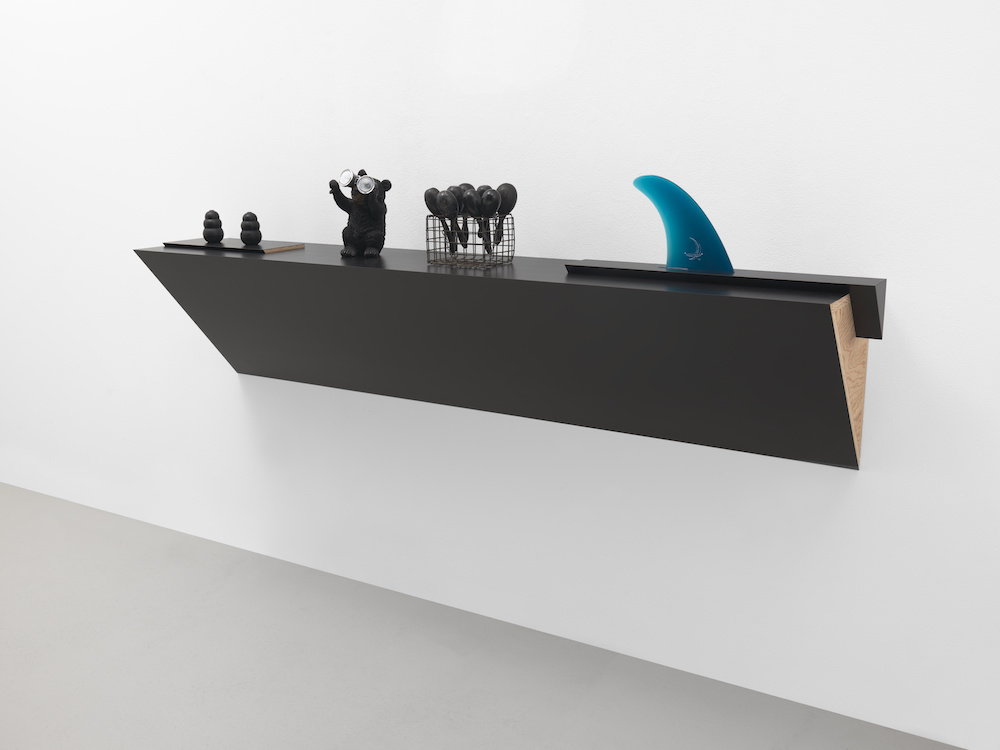 When I first meet Steinbach he is by turns no-nonsense, mercurial and playfully cantankerous. “I choose the objects like an artist would choose colours that go into a painting. I arrange them, I make a poem with them,” he tells me. Some of the shelves around the gallery walls juxtapose wooden bric-a-brac statues of seahorses with fins from the undersides of surfboards; water filtration balls with ornamental earthenware balls. Each piece has its own discreet visual language. The objects are found or bought; the shelves themselves are made by the artist.
When I first meet Steinbach he is by turns no-nonsense, mercurial and playfully cantankerous. “I choose the objects like an artist would choose colours that go into a painting. I arrange them, I make a poem with them,” he tells me. Some of the shelves around the gallery walls juxtapose wooden bric-a-brac statues of seahorses with fins from the undersides of surfboards; water filtration balls with ornamental earthenware balls. Each piece has its own discreet visual language. The objects are found or bought; the shelves themselves are made by the artist.
“Most often it’s very spontaneous. I go down the street and I see an object.”
In the mid-70s, after years of post-minimalist painting, Steinbach noticed how a crowded shelf in his childhood home could function as a relief sculpture, with each item communicating in a specific way. For the next forty years he made it his mission to challenge the way we look at familiar things, beyond their function or everyday significance. He creates platforms, allowing the objects on them—handbags, cereal boxes, Nike trainers or action figures—to shock us with a sudden, unseen novelty that was in fact always there. The “shelves” can take many forms: beams across entire galleries, constructed apertures. For 1988s Adirondack Tableau, he built what appears like a wood cabin window. Owl figurines sit in it.
“Very often a unique artefact that is multiplied by millions and used every day loses the aura of art,” he says, “but in the right context it takes back that aura, like a work in a museum.” He calls this “non-hierarchy”: a pair of trainers, through the language of art, can achieve the same aesthetic value as things we have been taught to recognize instantly as art. If Duchamp’s readymades are all about alchemy—about how anything can become art once it is given the artist’s blessing—Steinbach’s work is about the value of the base materials.
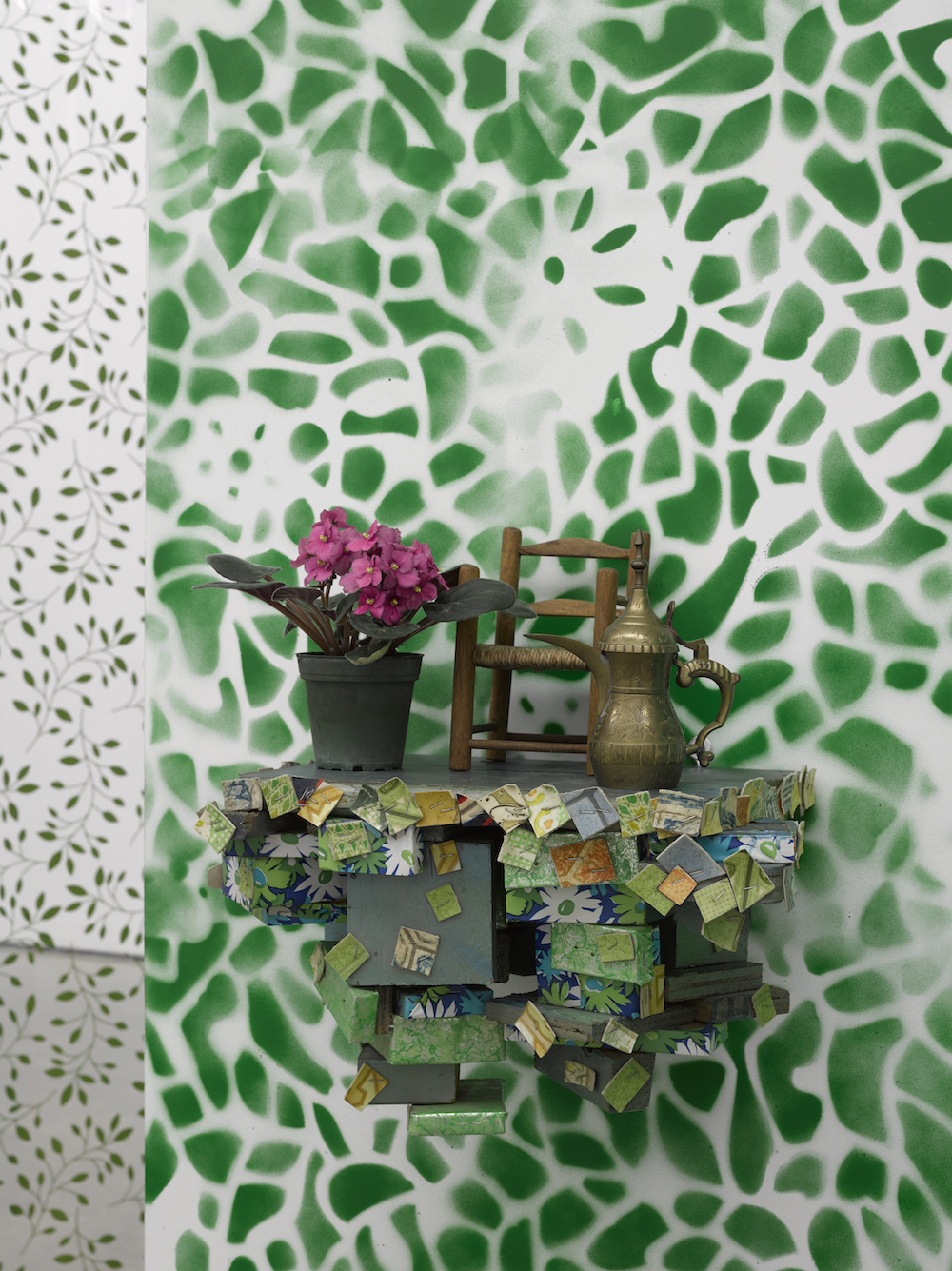
On the rise in the 80s, Steinbach was categorised alongside Jeff Koons. They both engaged with consumer products, and Steinbach’s shelves were seen as platforms of acquisitive accumulation rather than democratic grouping. (The work was given the label “Neo-Geo”—New Geometry—or “bullshit”, as Steinbach calls it in front of me.) Yet if all objects have a similar value for him, I ask, hasn’t he considered buying expensive artworks to display alongside his mass-produced or found objects?
“Different objects have different trajectories. Even change changes things. When you move to a new place and take things out of boxes suddenly you see something you’ve not for a long time.”
“I did way back. When people began asking me that I would say, if I had the money I would buy a Brancusi.” I notice the wooden seahorses in his new piece Untitled (Fins, Dolphin, Seahorse) have the same elongated, skyward aim as many of the Romanian artist’s sculptures. “That’s right. And I would put my Brancusi next to a dog chew.”
Squat, shapely black dog chews have been cropping up for years in Steinbach’s installations. This is where the non-hierarchy idea becomes interesting for me. If all objects have no distinct edge over others, what happens when one is visibly favoured? Is the value personal to him? I notice no chew marks on them. “They are pre-chewed of course. But we’ve had dogs showing up at the gallery. There was Mr Dog the critic, have you heard of him? He jumped at one of these and began to bite it.” Until I have demonstrated I have a feeling for his work the artist will enjoy playing with me. I’m another Mr Dog to him, and I will need to demonstrate how seriously I take his work before he takes me seriously. Call it a reverse critical mauling. “But no,” he says. “My personal connection with the chews is no deeper than my connection with all the other objects you see here.”
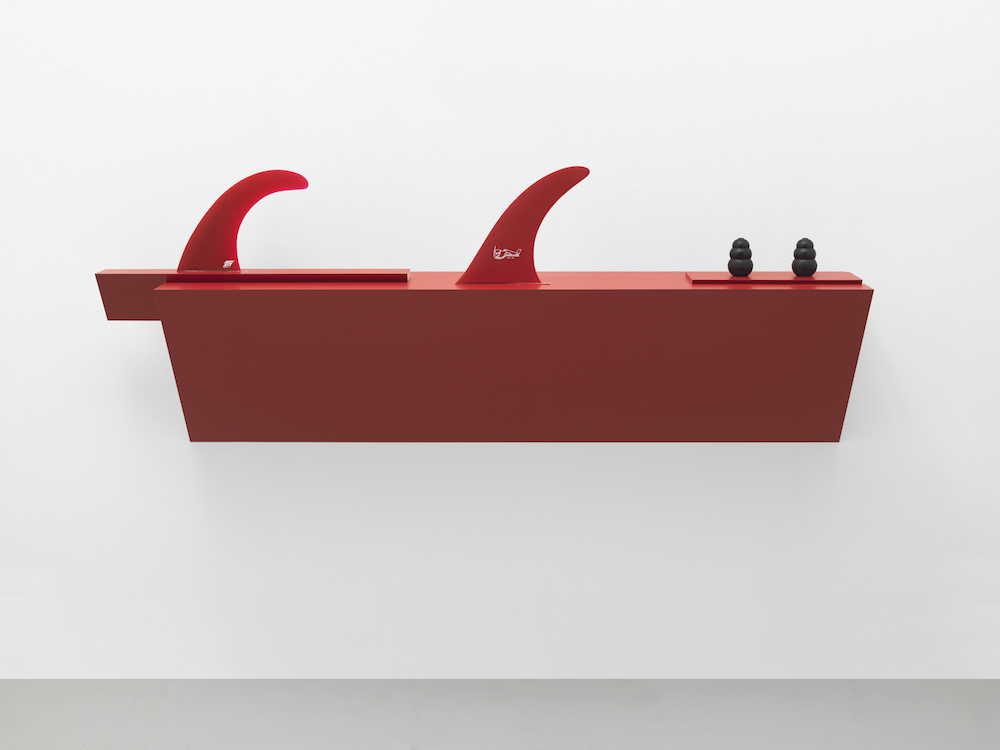
On the way up to the gallery’s meeting room, though, away from the busy drills of installation, he tells me some objects become part of his “vocabulary” in a way others don’t. “It is an intuitive and spontaneous thing, but the dog chew has become a motif. It’s also a marker of time. In the 80s I used a classic object you’d find in restaurants all over the United States: the Hall water pitcher, based on art deco. Those appeared in several of my works but they didn’t continue. Since 2007 the dog chew has become a fluid evolution of that paradigm.”
What is an object’s trajectory to becoming part of his vocabulary? “Different objects have different trajectories. Even change changes things. When you move to a new place and take things out of boxes suddenly you see something you’ve not for a long time. You may suddenly be inspired, and into the work it goes. Most often it’s very spontaneous. I go down the street and I see an object. I bring it to the studio and replace an object in a piece I’m working on already. It’s as fast as that. People have given me objects and some of those objects ended up in works. Some have been sitting on the studio floor for a long time and later on became part of a work.”
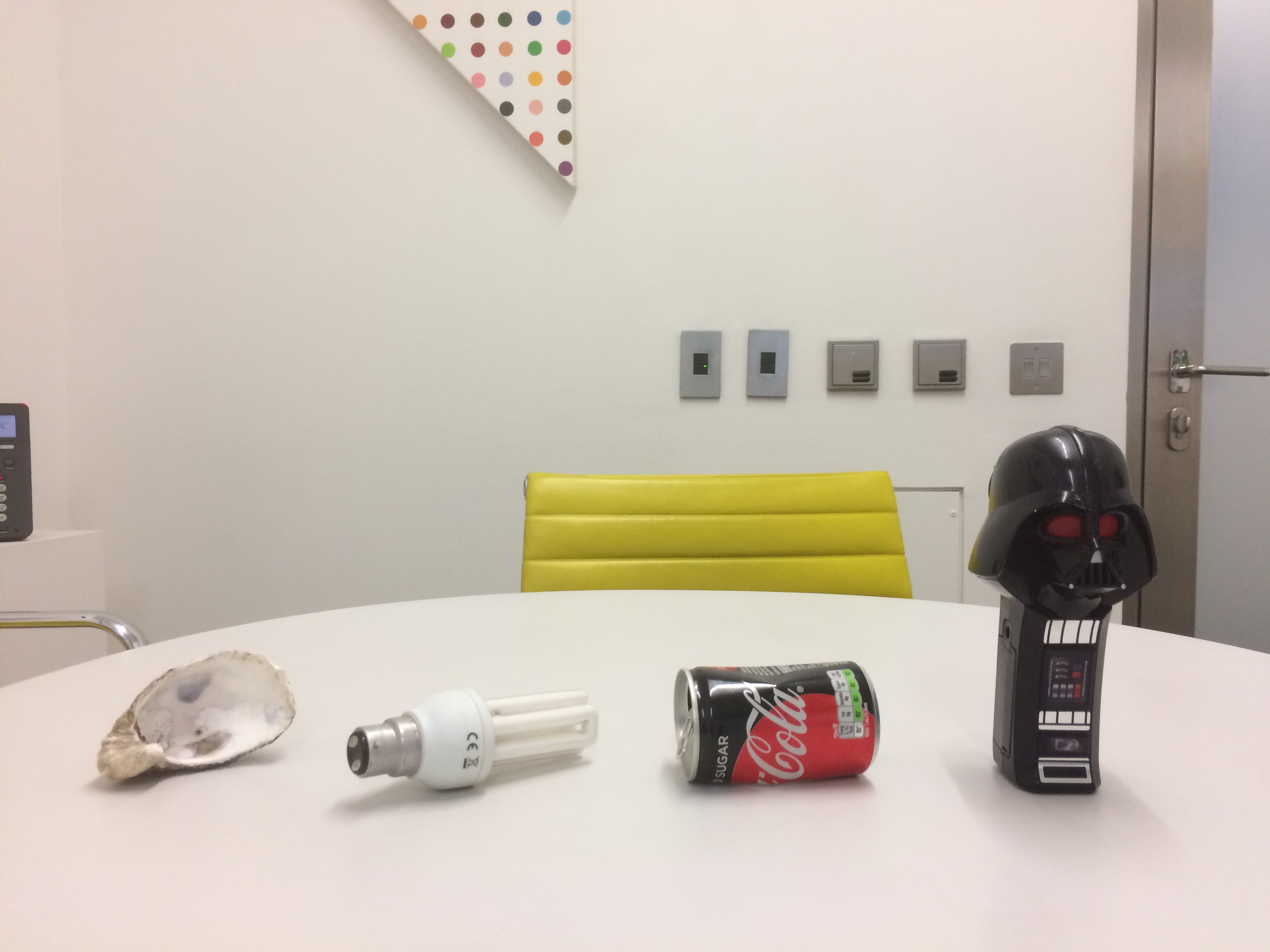
I’ve picked some things up myself, I tell him. Would he like to take a look? I take from my bag a Darth Vader vocoder, a small Coke Zero can, given to me as a freebie outside a tube station, a neon bulb and an oyster shell taken from a box outside a St James’s restaurant, advertising a lunch offer. In presenting these I hoped to observe his process first hand, his eye, his artistic impulses. He included a Darth Vader ceramic jar in last year’s Untitled (Cookie Jar, Jamaican Head, Stormtrooper, Dog Chew), and I hoped this might trigger a new motif.
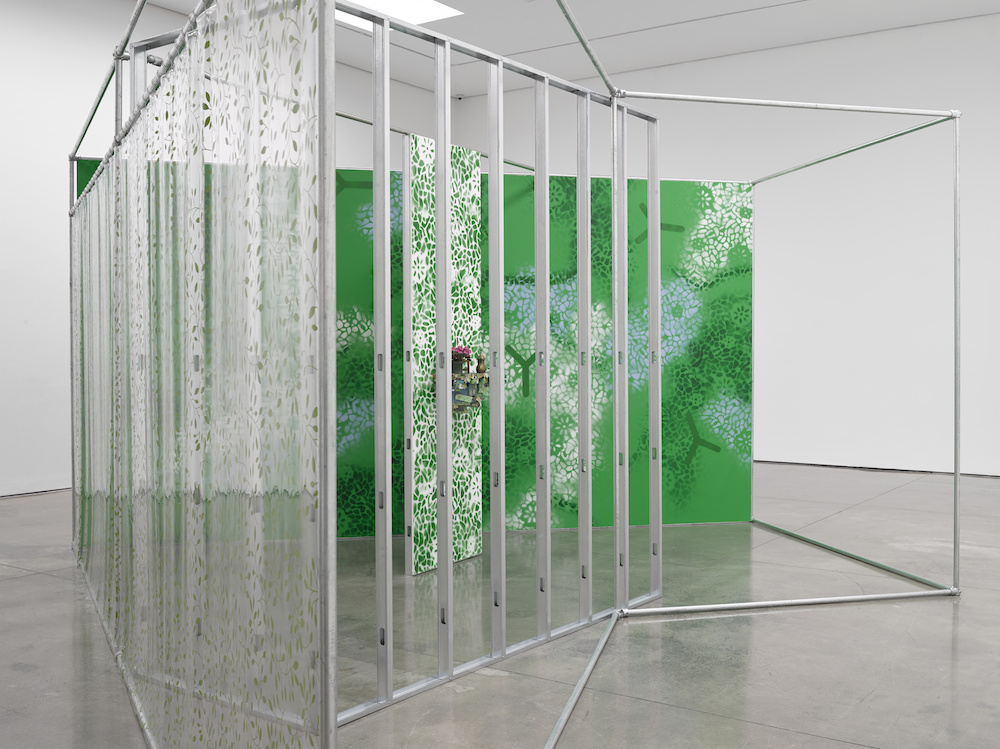
“I think we have a piece here, look.” He takes a picture with his phone, and explains the contextualizing around the objects, as if the table were a Steinbach shelf. The colours of the Coke can and the Vader helmet; the play of the black and the red. The white rectangles of wall, the yellow chair behind, the Damien Hirst “on top”: a triangle of canvas, intersecting. “Look what’s happening here,” he says. “They talk to each other. I’ll take all of them.”
“There’s nothing better than cutting loose, with a fresh source of energy.”
When I first described them as an offering to him, he said, “you know that I did a work that was called that?” I don’t. “When Jan Hoet became the director of Documenta in 1992 he invited me to do a project. In his office he had a shelf full of objects. I said, I want to take all your objects and put them in Documenta. I entitled it Display #30 – An Offering (Collectibles of Jan Hoet). You said yours was an offering. That’s what I do: I make offerings also.”
Part of Steinbach’s work is about bringing innate but overlooked qualities out of objects, which overcome a viewer’s preconceptions. But having worked in a similar way for decades, how does he get past his own preconceptions and learnt responses to keep his objects fresh? “Through strange encounters, you could call them. They give me a key to enter from another end. I always look for those kind of opportunities because there’s nothing better than cutting loose, with a fresh source of energy. This offering right here is offering me some ideas.”
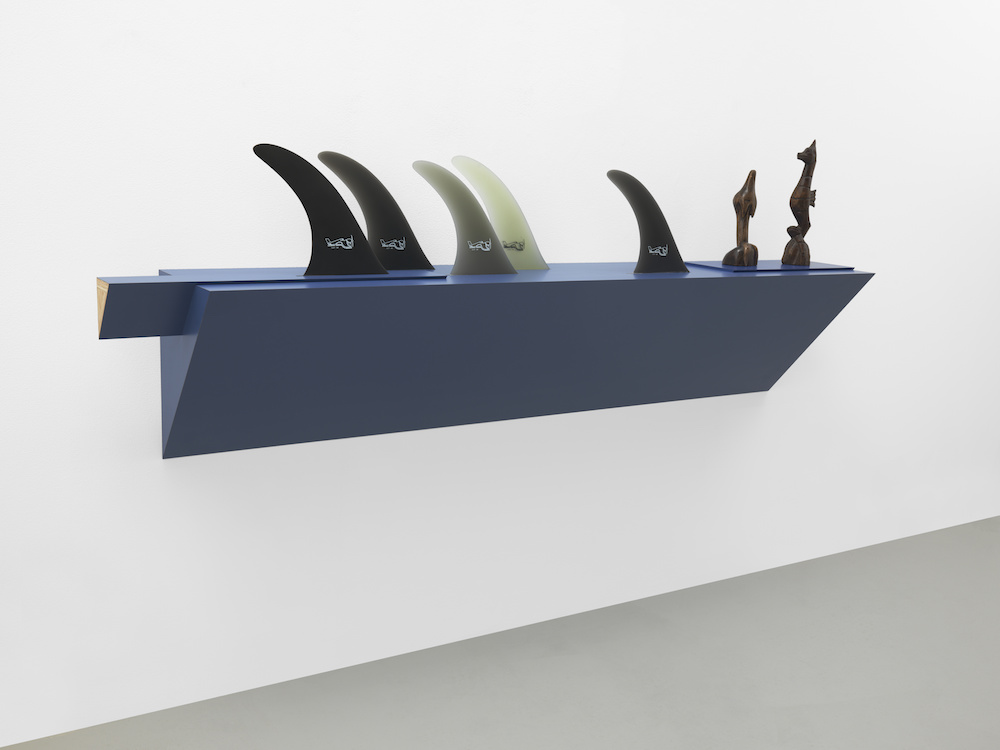
Haim Steinbach: Jaws
Until 20 January 2018 at White Cube Mason’s Yard, London
whitecube.com





